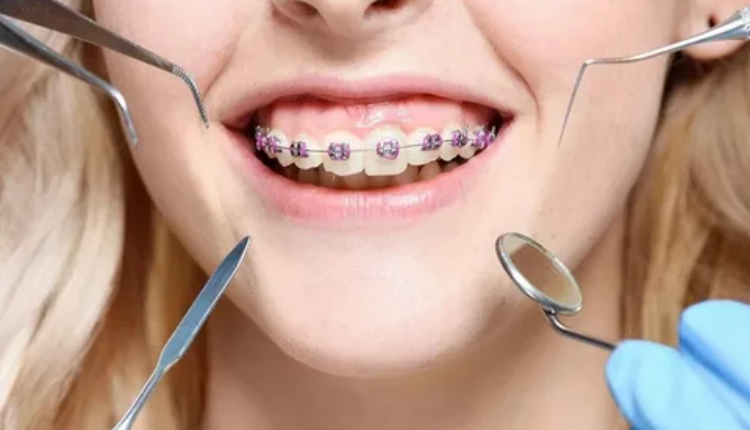
Orthodontic treatment has come a long way, offering a variety of braces to fit different needs and preferences. Whether you’re an adult considering braces for the first time or a parent exploring options for your child, understanding the different types of braces can help you make an informed decision. This ultimate guide will explore the various types of braces available, their benefits, and which might be the best choice for you.
For top-notch care, visit orthodontist in Kandivali East at Smile in Dentistry. Expert treatment options, personalized plans, and advanced techniques for a perfect smile.
1. Traditional Metal Braces
Overview
Traditional metal braces are the most common type of braces. They consist of metal brackets and wires that are adjusted over time to straighten your teeth.
Benefits
- Effectiveness: Highly effective for correcting severe misalignments and bite issues.
- Durability: Made of high-quality stainless steel, making them durable and reliable.
- Cost-Effective: Generally more affordable compared to other types of braces.
Considerations
- Visibility: Metal braces are the most noticeable type.
- Discomfort: Can cause initial discomfort and irritation inside the mouth.
Best For
Traditional metal braces are ideal for individuals with severe dental issues who are looking for a cost-effective solution and don’t mind the visibility of braces.
2. Ceramic Braces
Overview
Ceramic braces are similar to metal braces but use clear or tooth-colored brackets, making them less noticeable.
Benefits
- Aesthetics: Less visible than traditional metal braces.
- Effectiveness: Equally effective as metal braces for most orthodontic issues.
Considerations
- Cost: Generally more expensive than metal braces.
- Staining: The brackets can stain if not properly cared for.
Best For
Ceramic braces are best for individuals who want an effective treatment but prefer a less noticeable option than metal braces.
3. Lingual Braces
Overview
Lingual braces are attached to the back of your teeth, making them invisible from the front.
Benefits
- Invisibility: Completely hidden from view.
- Effectiveness: Can effectively treat complex orthodontic issues.
Considerations
- Comfort: May cause more discomfort and speech issues initially.
- Cost: More expensive than traditional and ceramic braces.
Best For
Lingual braces are suitable for individuals who need a discreet option and are willing to invest in a higher-cost treatment.
4. Clear Aligners (Invisalign)
Overview
Clear aligners, such as Invisalign, are custom-made, removable trays that gradually straighten your teeth.
Benefits
- Aesthetics: Virtually invisible, making them a popular choice among adults.
- Convenience: Removable, allowing for easy eating, brushing, and flossing.
- Comfort: Smooth plastic trays cause less irritation than braces.
Considerations
- Cost: Typically more expensive than traditional braces.
- Discipline: Requires discipline to wear aligners for 20-22 hours a day.
Best For
Clear aligners are perfect for individuals with mild to moderate orthodontic issues who prefer a discreet and removable option.
5. Self-Ligating Braces
Overview
Self-ligating braces are similar to traditional metal braces but use a different mechanism to hold the wire in place, reducing friction and often shortening treatment time.
Benefits
- Efficiency: Can reduce treatment time and require fewer adjustments.
- Comfort: Less friction can mean more comfort.
Considerations
- Cost: Generally more expensive than traditional braces.
- Visibility: Still visible, though slightly less than traditional braces.
Best For
Self-ligating braces are ideal for individuals looking for a potentially shorter treatment time and fewer orthodontic visits.
6. Damon Braces
Overview
Damon braces are a type of self-ligating braces that use a slide mechanism to hold the wire, allowing teeth to move more freely.
Benefits
- Comfort: Reduced pressure on teeth can make them more comfortable.
- Fewer Adjustments: Requires fewer orthodontic visits.
Considerations
- Cost: Can be more expensive than traditional braces.
- Visibility: Although slightly less visible than traditional braces, they are still noticeable.
Best For
Damon braces are suitable for individuals looking for a more comfortable treatment with fewer orthodontic visits.
Choosing the Right Type of Braces
Factors to Consider
- Severity of Dental Issues: Some braces are more suitable for severe orthodontic problems.
- Aesthetic Preferences: Consider how important the visibility of your braces is to you.
- Budget: Different types of braces come with varying costs.
- Comfort and Lifestyle: Think about how each option will fit into your daily life.
Consultation with an Orthodontist
The best way to determine which type of braces is right for you is to consult with an orthodontist. They can assess your dental issues, discuss your preferences, and recommend the most suitable option.
Final Thoughts
Choosing the right type of braces is a significant decision that can impact your oral health and confidence. By understanding the different types of braces available and considering your unique needs, you can find the perfect solution to achieve a beautiful, healthy smile.
Whether you opt for traditional metal braces, ceramic braces, lingual braces, clear aligners, self-ligating braces, or Damon braces, the journey to a perfect smile is well worth the effort.








[…] post The Ultimate Guide to Different Types of Braces: Which One is Right for You? appeared first on ezine […]
Купить диплом в Москве и Московской области
kyc-diplom.com/geography/moskovskaya-oblast.html
купить диплом о высшем образовании в омске landik-diploms.ru .
Быстрая схема покупки диплома старого образца: что важно знать?
купить диплом специалиста в новосибирске arusak-diploms.ru .
купить диплом о высшем подешевле many-diplom77.ru .
Полезная информация как официально купить диплом о высшем образовании